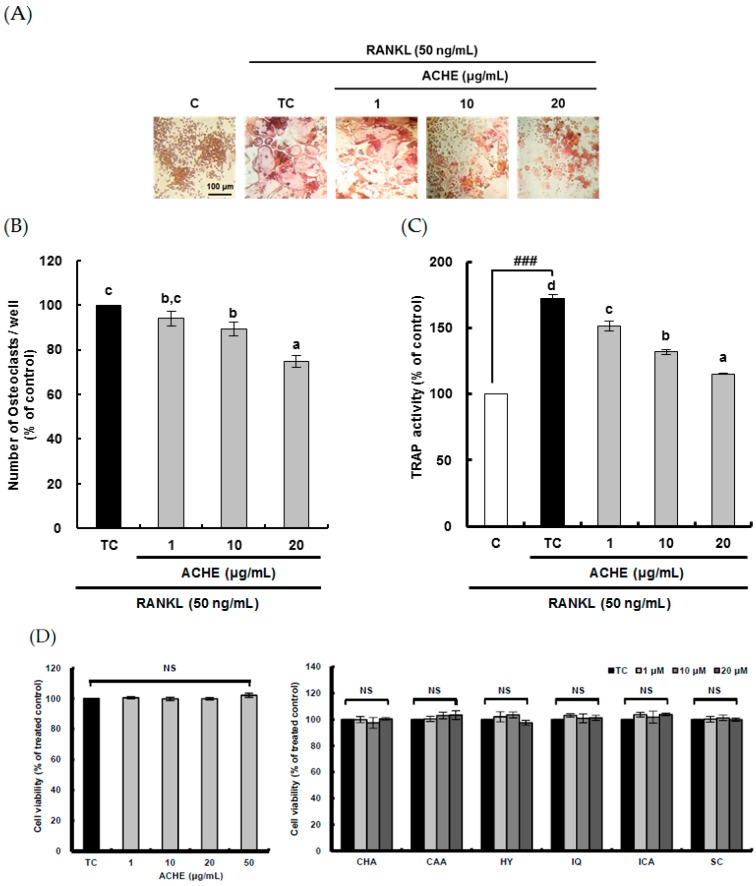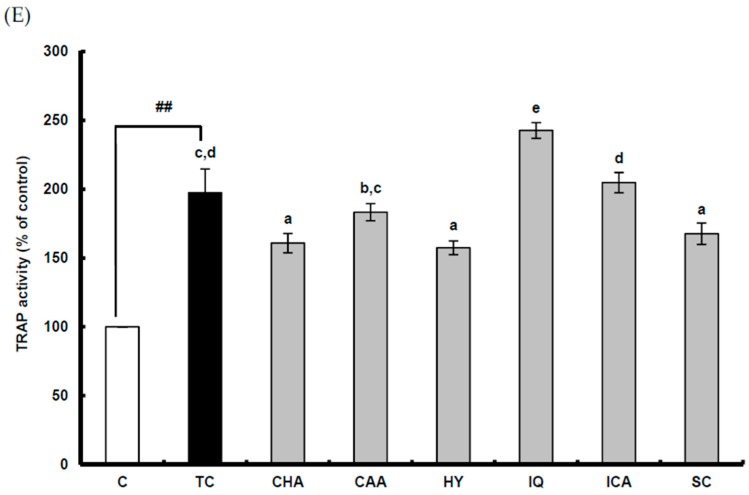Figure 3.
Inhibitory effect of hydroethanolic extract of A. capillaris and its six marker compounds on osteoclast differentiation. (A) The visualized tartrate-resistant acid phosphatase (TRAP)-positive multinucleated osteoclasts with A. capillaris hydroethanolic extract (ACHE) treatment; (B,C) The counted number and TRAP activity of TRAP-positive multinucleated osteoclasts with ACHE treatment; (D) The cytotoxicity of A. capillaris and its six marker compounds; (E) The TRAP activity of multinucleated osteoclasts with six marker compounds treatment. RAW 264.7 cells were exposed to receptor activator of nuclear factor-κB ligand (RANKL; 50 ng/mL) for 5 days in the absence and presence of ACHE. After 5 days in culture, the cells were fixed and stained using a leukocyte acid phosphatase kit. TRAP-positive multinucleated osteoclasts were visualized at 200-fold magnification under light microscopy. TRAP-positive multi-nucleated osteoclasts were counted and TRAP activity was measured at λ = 405 nm. Data are expressed as percentages of the value of cells treated with RANKL (means ± standard deviations, SD, n = 3). Data are expressed as percentages of the values of untreated cells (means ± standard deviations, n = 3). Different corresponding letters indicate significant differences at p < 0.05 by Duncan’s test. ## p < 0.01, ### p < 0.001 vs. C. C: control, which was not treated; TC: treated control, which was treated with RANKL; CHA: chlorogenic acid; CAA: caffeic acid; HY: hyperoside; IQ: isoquercitrin; ICA: isochlorogenic acid; SC: scoparone; NS: not significant.


